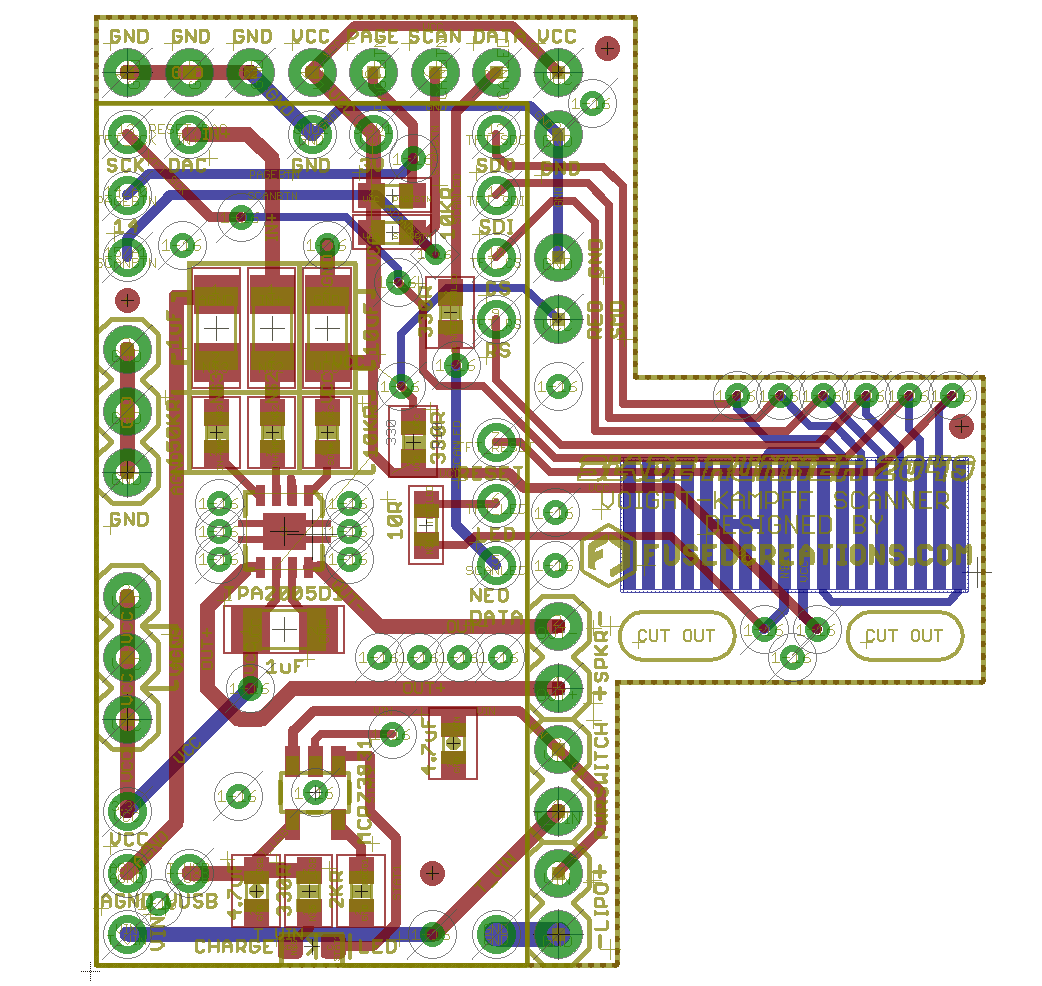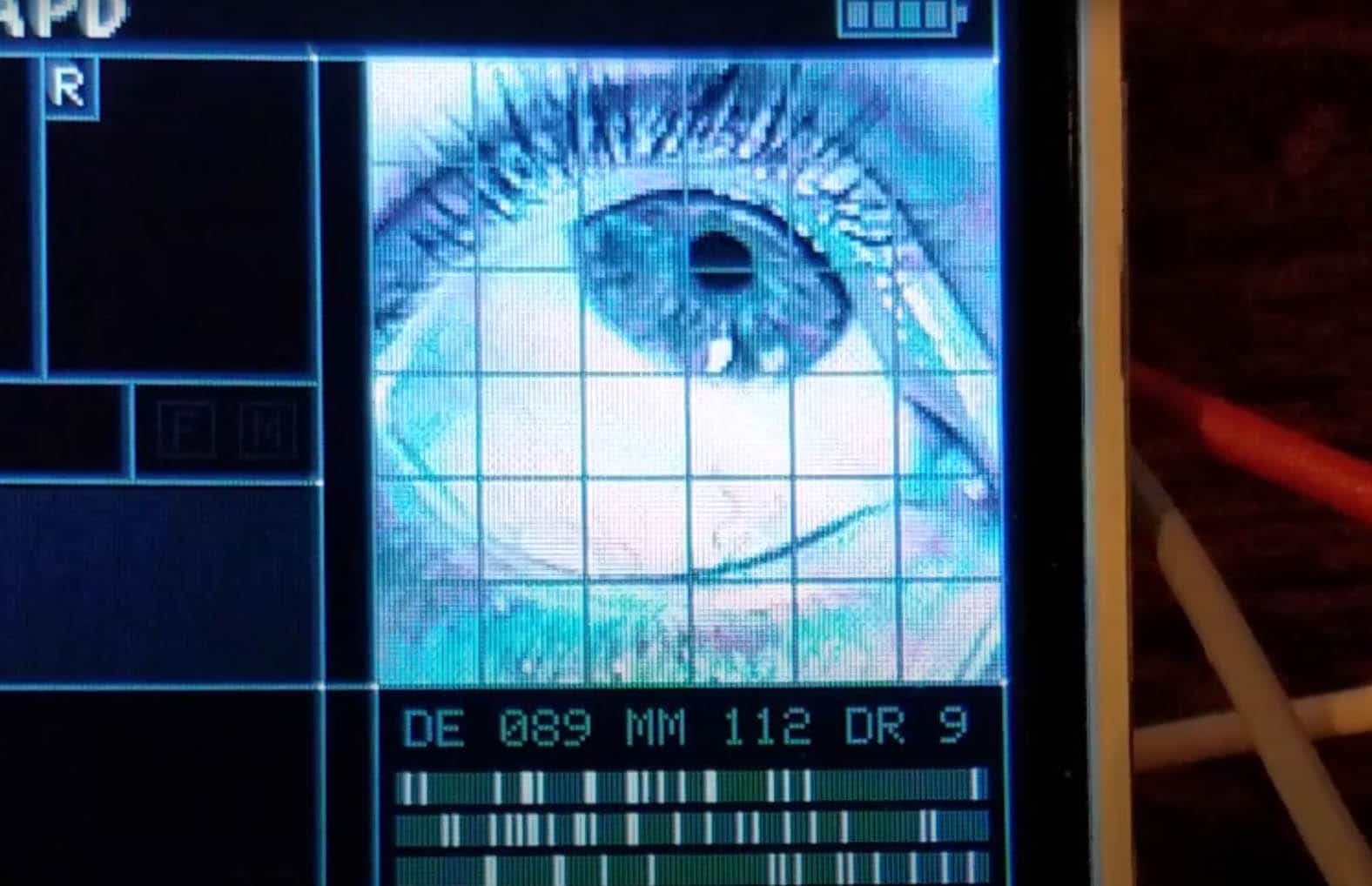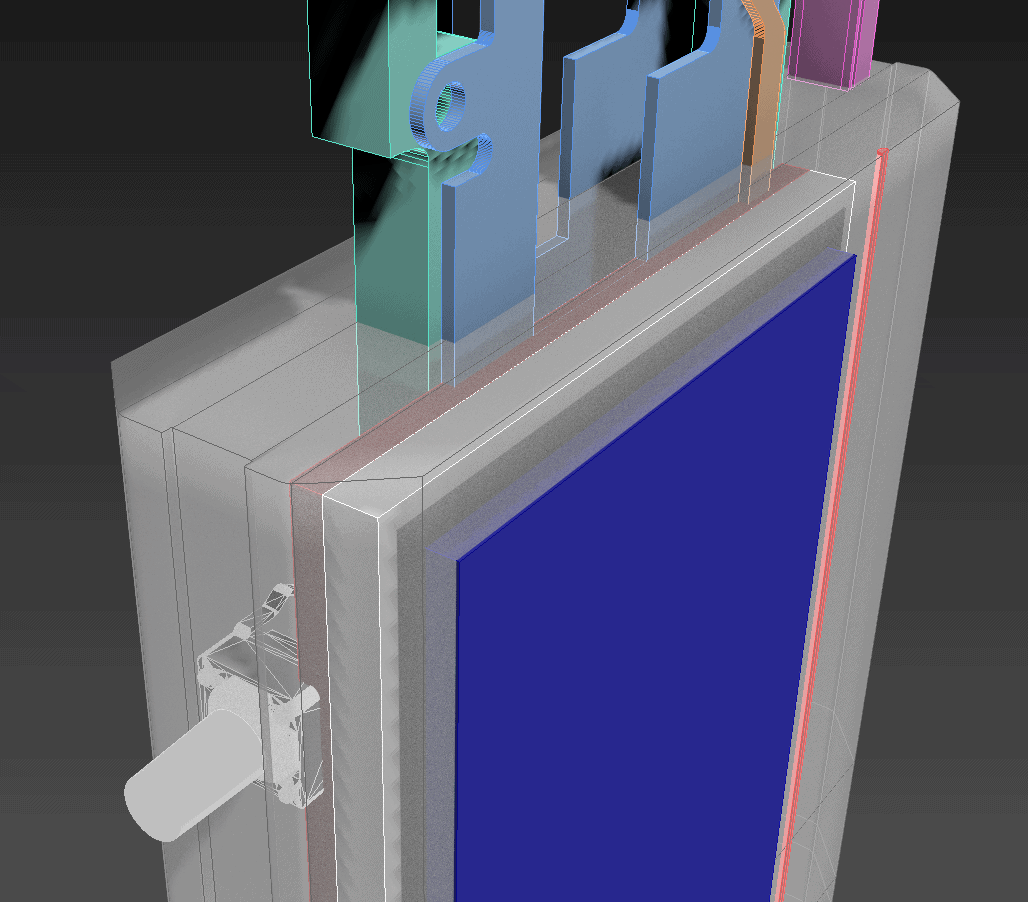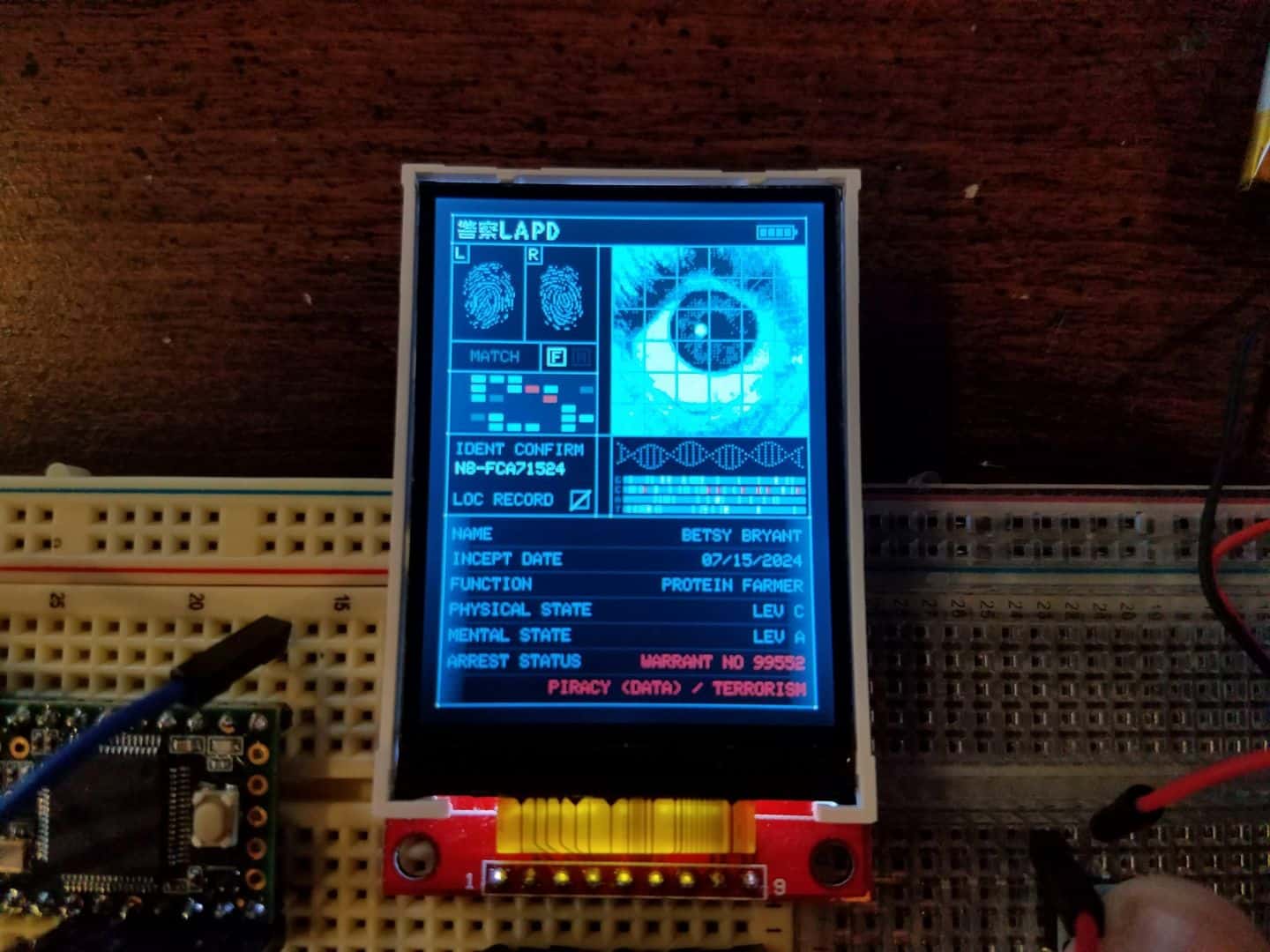So I’ve been bitten by the Blade Runner bug thanks to the new movie and I wanted to make a couple things from it for my own collection. Everyone in the props world is already dog-piling the guns, so I feel like those are well-treaded ground at this point… I wanted to make something a bit different. As a warning, this might be a bit spoilery if you haven’t already watched the film. As a further warning, I’m going to go full rabbit-hole on this one, because I want to share how I’m approaching the project.
The portable Voight-Kampff scanner that K uses at the beginning of the film struck me as a neat prop, largely because I can see making a ‘working’ version with lights and other necessary practical effects, including, I hope, the spring-action slide.
As best I can tell the screen on the actual film device doesn’t work at any point – it just illuminates. You see it flash on when the device flips out, and also during the scanning process, where it is lit up a solid white color.
It looks like there’s a small red light that remains on after the scan, and the obvious bright blue-white light that illuminates the eye during the action. Obviously I’m wishing I had a Blu Ray resolution reference video to work from, here, as this doesn’t give me much to go on. Fortunately, these particular props were on display at the “Blade Runner 2049 Experience” during this year’s San Diego Comic Con. I live in New Jersey, so I didn’t go myself, but thanks to other dedicated nerds on the internet I’ve been able to scrape together a bunch of reference images of the device all the same.
Thanks to all of these images, I have enough to work from to make a pretty reasonable 3D model of the device for eventual printing. Although at first glance the device looks like it’s a repurposed digital camera, I’ve started to rule that out as an option. For one, no actual miniature camera would be thinnest where the camera lens is supposed to be (which I reason would be the backside of where the screen is). It actually looks a lot to me like it was based on a dictaphone or miniature cassette recorder, particularly given the set of three buttons on the side.
That said, it lacks the typical speaker holes that accompany the functionality of those items. It is possible one of the panels on the ‘back’ is meant to replace those areas, but I’ll probably never know.
With all that considered, here’s the battle plan:
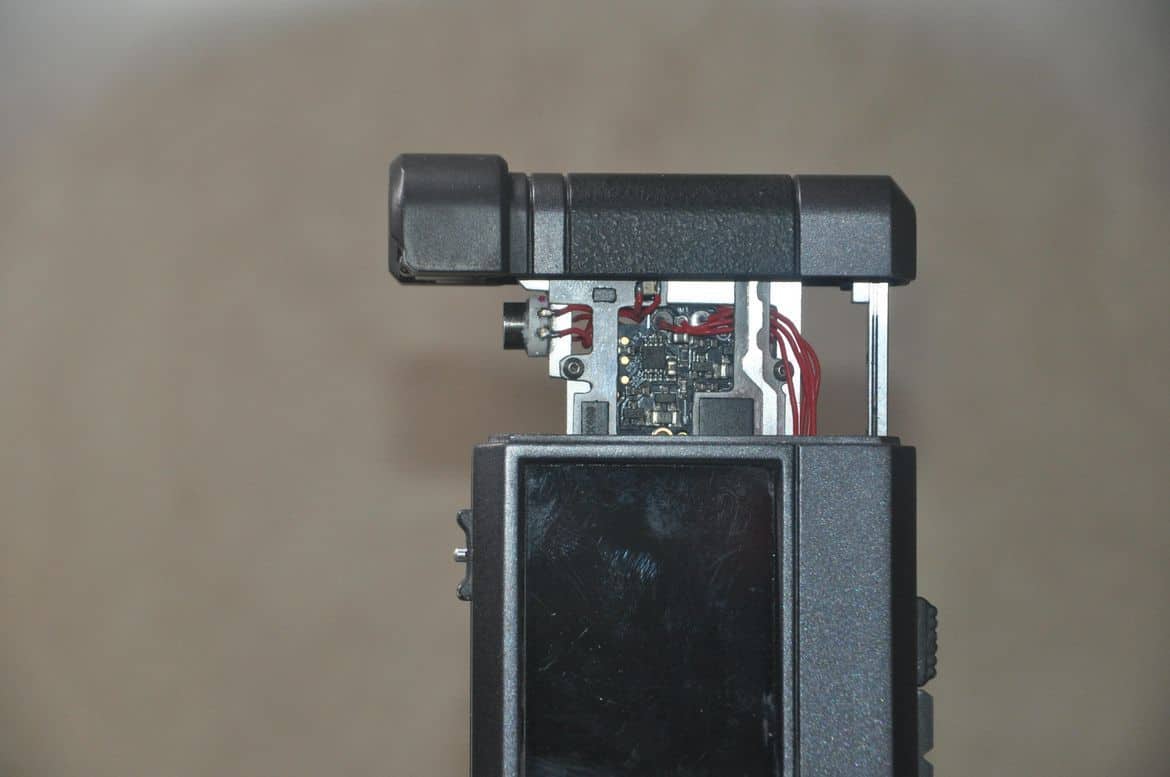
“Camera” lens (non-functional)
1 of 6Surface mount red LED (always on)
2 of 6Blue LED for forward illumination
3 of 6“Scan” activation button
4 of 6Slide release button
5 of 6Screen – should glow white, or function?
6 of 6Now, the issue I run into at this point is that while I can easily start banging a model of this thing together (and have started to do so), I don’t have a great sense of the precise scale of the device. It’s obviously handheld, which gives me some estimates, but looking at it in Gosling’s hand is not by itself going to be sufficient to make a good guess. I want to pin the scale down early so that as I start carving out space for certain components (like the LEDs or light panels for the screen) I know exactly what the tolerances I have to work with are. Unfortunately, I’m never going to get precise measurements of the device itself, so I have to start doing some detective work to arrive at some reasonable estimates.
The first thing I’m looking for in the reference photos is anything I can find that has a determinable scale. A lot of the props in the same display as the VK are also bespoke movie items, so that’s not much of a help. The best I can figure so far is that the book (“Pale Fire” by Vladimir Nabokov) is a real-world item, as is the clipboard next to it. The clipboard is actually fairly interesting in that it has a ruler on it.
If I can pin down the scale of a few items in the scene, I can extrapolate those dimensions onto the VK itself and get a reasonable ballpark. I believe the clipboard is similar to these, as they have a similar clip at the top, are clear plastic, and measure out to 10″ and change on the right side. This would mean that the width of the clipboard can be estimated at around 9″.
Here’s where we start getting really stupid with this. Using a program called ImageJ, you can do direct measurement comparisons on an image based on a scale you establish within the image. If we tell it the clipboard is 9″ (or 228.6mm), we can then draw a rough measurement on the VK…
… which gets us approximately 60mm wide and just about 83mm tall on the body of the device itself, and about 70mm long by 15mm on the pop-out part.
Now, obviously these are only estimates, and they’re bound to be wrong because of differences in distance and perspective in the photographs. That said, I like these measurements at a glance, but just to test them I did a quick printout and mounted it to cardboard…
Feels like I’m pretty close here.
Another approach would be to grab measurements of the book in the image for scale. Stefan Jones on TheRPF.com shared a post in one of the Blade Runner threads that he had been able to get a copy of Pale Fire in paperback in an edition that matched the one on display. I popped a quick message over to him and he was nice enough to give me measurements on the actual book, amounting to 137mm wide by 222mm tall by 20mm thick.
Rather than using the clipboard as a measure, I tried calibrating the scale comparisons in ImageJ with the height of the book, and it has suggested that the width of the VK base device is around 62mm, which is damn close to my initial estimate of 60mm. I think I’m right in the ballpark for scale, which makes me feel a bit more confident – confident enough to start modeling.
More to come as I have time.
